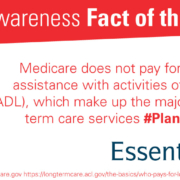Paying for Higher Education – Independent Press – 06/04/14
The Independent Press
Money Matters – Question of the Month – June 4, 2014
Paying for Higher Education
By Aaron Skloff, AIF, CFA, MBA
Q: We are concerned about the increasing cost of higher education for our children. What benefits might we and our children gain by contributing to a 529 savings plan?
The Problem – Cost of Higher Education
The total charges for just one year of a four-year undergraduate education; including tuition, fees, room and board increased 3.4% from the academic year 2012-2013 to the academic year 2013-2014. The biggest percentage increase, at 3.7%, was at private nonprofit institutions. State funding reductions are leading to large increases at public institutions. Further state funding reductions are expected to lead to future increases.
A child born today can expect to pay over $241,000 for a four-year undergraduate education at a state institution and over $394,000 for a private institution, based on current total charges data provided by The College Board; and assuming 5.0% annual increases. Assuming 6% annual increases rates would be $286,000 and $467,000, respectively.
The Solution — 529 Savings Plan
A 529 savings plan can truly improve a child’s entire life. When you contribute to a 529 savings plan you give a precious and powerful gift – funding for a higher education. Clearly, Congress agrees. Congress established Section 529 of the tax code so savings used for qualified higher education expenses at an accredited education institution would be free from taxes. Qualified expenses include tuition and fees, books, equipment and supplies required for a student’s field of study, and room and board. Don’t lose sight of what types of schools higher education includes: undergraduate, graduate, law, medical and (get this) even some golf schools!
529 Savings Plan Basics
The current contribution limit per year is $14,000 per beneficiary – that is $28,000 for a husband and wife, per beneficiary. A single contribution, totaling $70,000 per beneficiary, is permitted as long as no further contributions are made by that contributor (donor) to the same beneficiary until the sixth year. Interest, dividends and capital gains that you earn inside the 529 savings plan are all free of taxes. If the savings are used for higher education the entire amount can be withdrawn free of taxes. If the savings are used for other purposes the profits are taxed and assessed a 10% penalty. If a student is fortunate enough to receive a scholarship, there are no penalties on withdrawals of the same amount.
529 Savings Plan Estate Planning Benefits
529 savings plans are one of the most powerful, lowest cost estate planning vehicles. Contributions made to a 529 are removed from your estate. Unlike most solutions that remove assets from estates and leave little control over investments and beneficiaries, the 529 allows owners to change investments and beneficiaries every year. Because 529 owners can name a successor to the account when they pass away, a 529 can be used for multiple generations. Just imagine a grandmother and grandfather who strongly believe in education. Each makes $70,000 contributions as follows: four grandchildren, 16 great-grandchildren and even their gardener’s three children. In total, they contribute over $3.2 million and instantly remove the same amount from their estate.
The Benefits of a Higher Education
The median earnings for full-time workers ages 25 and older with a bachelor’s degree was $56,500 versus $35,400 for high school graduates, in 2011. That is 60% greater earnings and a lifetime of easier access to new career opportunities. Many employers will not even interview candidates without a bachelor’s degree. And, some of those same employers generously reimburse graduate education costs. The median earnings for full-time workers ages 25 and older with a master’s degree was $70,000 versus $35,400 for high school graduates, in 2011. That is 98% greater earnings and a lifetime of even easier access to new career opportunities.
Action Steps – Give The Gift That Keeps on Giving
When you contribute to a 529 college savings plan you simultaneously give your loved ones the most precious and powerful gift – funding for a higher education and you give yourself a powerful estate planning gift.
Aaron Skloff, Accredited Investment Fiduciary (AIF), Chartered Financial Analyst (CFA), Master of Business Administration (MBA) is CEO of Skloff Financial Group, a Registered Investment Advisory firm. He can be contacted at www.skloff.com or 908-464-3060.












